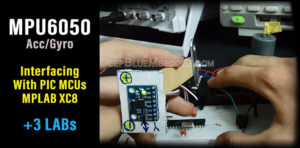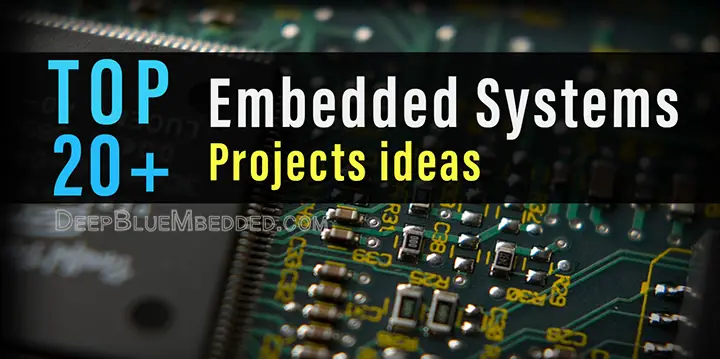
This article includes my picks for embedded systems projects ideas for engineering students. If you’re searching for new innovative ideas for embedded systems projects, then you may find this helpful. Whether you’re doing it for practice or for the final year project ECE or EEE, you’ll find some of the best embedded systems projects here.
These embedded systems project ideas range widely in difficulty and hardware requirements, so they cover a wide range of applications and budget demands. And you should know that these are only a brief abstract for ideas, not detailed guides on how to implement then.
Some embedded systems projects need more mechanical parts and machining, so you may need the help of mechanical engineering colleagues. While other projects need extensive computational power for which you’ll need a 32-Bit ARM-based MCU (I recommend this board on Amazon.com). And some projects require minimal computational power while being battery operated, that’s where you should consider an 8-Bit MCU (I recommend enhanced PIC MCU dev board like this on Amazon.com) or you can use an AVR if you wish, it’s a matter of personal preference.
If your project (like project #1) needs to run a neural network or any sort of artificial intelligence (Ai) algorithms, then you should really consider using an embedded Linux computer board (The most common board in this area is the Raspberry Pi on Amazon.com). Using a small microcontroller for this type of project will not give you the results you wish. And sometimes, it’s best to incorporate both MCU with a computer where the computer board runs the Ai algorithm and the actions are sent to the MCU which drives the hardware (actuators, motors, etc).
|
NOTE It’s up to you to do the research and dive deep into each topic/project so you can implement it the way you want. Be careful not to copy projects from the internet as is, you may pass the evaluation but it’s not healthy for your career in engineering. At least try to figure out why things are working the way they do. Try to figure out the system’s parameters so you can make changes to fit the needs of your project idea. It’s my only advice regarding this matter. |
Without further ado, let’s jump right away to the list of top 20+ embedded systems projects!
Top Embedded Systems Projects Ideas List
1. Self-Driven Car Model
After building a small steering car with a good steering mechanism, it’s the time to embed an intelligent driver system in it. Using a camera you can take pictures of the road curvature to determine the direction and magnitude of steering action required to keep the car on track (in the same lane). Recond these data manually, then take the picture to your local PC and train a neural network model to make predictions. The final model could be deployed on the raspberry pi board mounted on the car.
This project will give you a very good experience in machine learning, robotics, embedded systems, and control. It may take a while to grasp these foundational topics and fine-tune the system to get reliable results. But all in all, it’s a totally amazing project to do!
Check out this example self-driven car project
2. Magnetic Levitator
It’s an interesting project to build in fact, where you have to monitor and control carefully the magnetic field strength. You’ll need a hall effect sensor for that and maybe some other components. And there are many possibilities after getting this system to work. You may build a small model for a floating train or something like that. It’s kind of interesting and fun project for me. if it is the same for you, then you may consider building it.

3. Robotic chess Player
I consider this a very educative and technically intensive project. You will learn a lot down the road while designing and building this project. And here is why! It combines mechanical construction with an embedded control system and artificial intelligence altogether. The Ai algorithm will decide the move, then the embedded system will move the part. The motion may be done with pick & place arm or by magnetic drag (and I prefer magnetic motion, it’ll look like the one in harry potter movie!).
It’ll take some time to implement the Ai algorithm and get the mechanical parts to operate precisely and accurately. But at the end of the project, it’ll be something to be proud of. You can add any innovative ideas you have. Maybe backlight on the chessboard to indicate the place to move to. Maybe create a touch wireless screen, the user touches the place on the screen and the chess parts will start moving correspondingly, it’ll be magical and satisfying to look at XD!

4. Touch Piano Synthesizer
A couple of years ago, I was working on a similar project like this one. An audio system that wasn’t the same, but let me give you an idea about this amazing project.
In the end, the end product is a piano, like the electronic ones you see in stores. But this piano works by touch, a capacitive touch panel. It’s going to be pretty weird to play on, but a little of practice, you’ll like it a lot!
In this project, you’ll learn a lot about direct digital synthesis and musical sound synthesis using a digital microcontroller. You’ll also build a power amplifier to drive the output speaker for sound. And build the user interface capacitive touch panel and read the inputs and generate the tone correspondingly.

The most important thing to note, playing a note is not as simple as outputting a sine wave of the same frequency! let’s say you wanna play the sound of C4 it’s equivalent frequency is 262Hz. Well, a real piano doesn’t generate the sine wave continuously at the same amplitude. No, it’s more complex than this intuitive idea.
The piano has small hammers that hit the corresponding strings to generate different tones. the tune starts gradually and fades away gradually, we call that the string envelope. In the music world, they divide it into 4 parts called ADSR. Attack, Decay, Sustain, Release.
Attack -> The rise speed depends on the speed and force at which you hit the key. Harder hit gives faster attack
Decay -> each instrument has a pattern for sound decay after playing a note
Sustain -> while holding the key, the sound level stays at the sustain level
Release -> after releasing the piano key, the sound starts fading awaaay

Look, I’m an engineer and pretty noob at music but I had to learn this stuff while creating a similar project!
If it sounds interesting to you as it does to me, then give it a shot and research this topic before creating your own design.
5. Sound Source Localization
This project is simply to create a small robot that doesn’t have to move. But only its head should be capable of rotation! When you talk to the robot, it should locate your voice direction and turn its head so it looks to you while speaking with it!
The placement of microphones in the robot head is very critical to perform sound localization and also you’ll be needing some analog circuitry to pre-process the signal before passing it to the microcontroller.
This project is not that hard to do, but it requires some research to find out how the technique of sound localization actually works. And it’s a really fun project to do! Yet you still can add many options and features to make it more complex and eye-catching.
6. Quadcopter ( RC + Autonomous )
You can build a quadcopter from scratch. But my advice is to get a complete frame or 3D print it. All the other work is going to be embedded systems related. Just skip the mechanical design and construction by buying or printing a ready frame.
This project requires implementing and tuning multiple PID control loops. To maintain stability, position, orientation, and location of the quadcopter while flying in the air. You’ll need to mount multiple sensors onboard with the microcontroller. I highly recommend STM32 ARM-Based one for this task.
The drone will be both RC (remotely controlled) and Autonomous. A single click will give it a task to travel from a GPS location to another. It’s a basic autonomous task to do.
Furthermore, you can add implementations for trajectory planning and generation for maneuvering indoors and outdoors and you can really do innovative with it. Just build it and tune the controllers, then you can add very amazing and different intelligent algorithms.
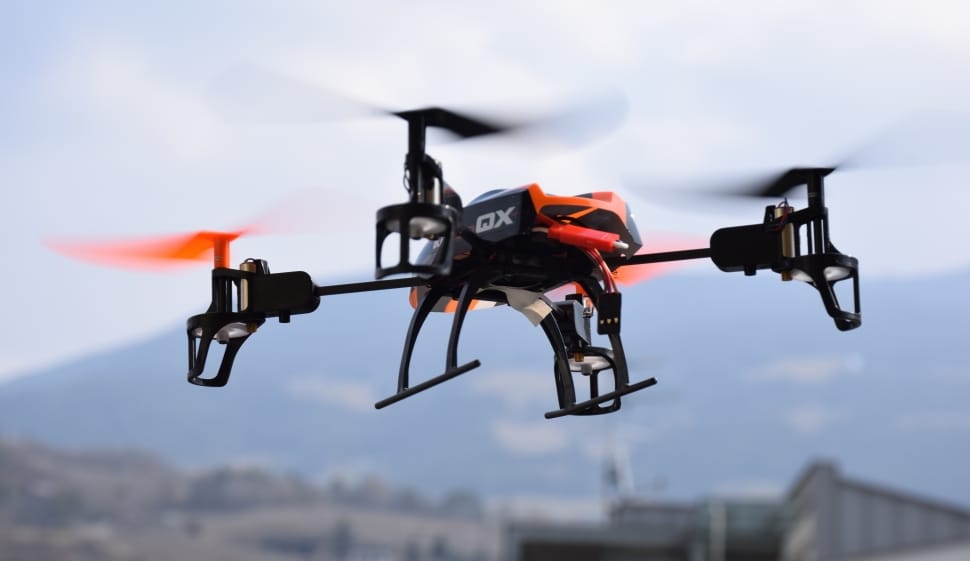
Have a look at the following 2 videos on youtube to see where can you go after getting your drone to fly and stay stable in the air. It’s amazing how much you can learn and implement to make your drone project stand out and not be an ordinary project.
This video and This Video
For getting the frame, the easiest way is to add one of the following two amazing options to your cart and get it within a few days and start your project! Readytosky S500 Quadcopter Frame(on Amazon.com) and Readytosky 250mm FPV Racing Drone Frame(on Amazon.com)
I recommend for you the “Arial Robotics” course on coursera. It’s pretty good at explaining the basics and dynamics of quadcopters, they’ve done this really well.
7. Wall Vertical CNC Machine
This is a robot that you can build and give an image to draw but instead of drawing horizontally, it’ll draw and paint vertically on the wall. It’s like a CNC machine, in fact, it is a CNC machine but draws on the wall. It can make amazing paintings and shapes to decorate places where human artists can not reach.
It’s basically the idea of this project. But the tip I have for this is to try eliminating the need for connectivity with a running computer. You can generate the G-code for any drawing you have and save it to an SD-Card. The robot you’ll build should have an SD reader interface instead of a serial cable. It’s a much more efficient and reliable way to do it.
I think there are no ready frames to get for such a project. So, you should search for some mechanical engineer fellows to participate with your embedded systems development team.
8. Sound Spectrum Analyzer FFT
This embedded systems project requires no mechanical parts at all. It’s a completely microcontroller-based application. You’ll need a pretty powerful MCU for it, but some guys have done a great job optimizing the algorithm to have it running on tiny AVR 8-Bit chips.
The basic idea is to get the sound signal and feed it to your microcontroller’s ADC which samples it at a specific rate. Then it performs a Fast Fourier Transform (FFT) algorithm to decompose the spectrum components of the original signal then plot it graphically on a graphical TFT display.
The computation and display update part should be done pretty fast to meet the real-time requirements of this project. No one likes to see the screen lagging the actual sound being played at the moment, this error is easy to detect and will affect your final evaluation. You can still use led bars instead of graphical LCD or whatever you want.
Here is an example project YT video to get a better idea for this project.
This LED Matrix (on Amazon.com) will look amazing and capable of displaying 32 bars and that’s pretty much sufficient.

9. Camera Stabilizer ( Gimbal )

You can DIY the camera stabilizer using a microcontroller and an IMU sensor (Gyroscope + Accelerometer). Implementing a PID controller is not hard that much, while this project in particular needs way more of testing and fine-tuning to get anyway closer to the real product.
For educational purposes, it may not be extremely accurate and smooth. But you should do your best to get very close to this goal. And you can search online to find a model or frame that you can 3D print on your own, so you can focus on the embedded firmware development.
10. Digital Oscilloscope
This is another embedded systems project idea that doesn’t require mechanical design or construction. Instead, you’ll need to build some analog interface circuitry to get the input signal and prepare it for sampling. You should use a microcontroller that has a powerful ADC such as any DSP, dsPIC, or STM32. I think you can go up to 6MS/sec.
You’ll need to interface a graphical LCD display to show the signal in real-time. And this is the challenging part!
You can also add some options and features such as: recording the data samples, saving the screen, searching for values, adjustable cursors, reading cursor position to calculate signal’s frequency, etc. There are many things you can do to enhance and upgrade this project and you’ll learn a lot down the road!
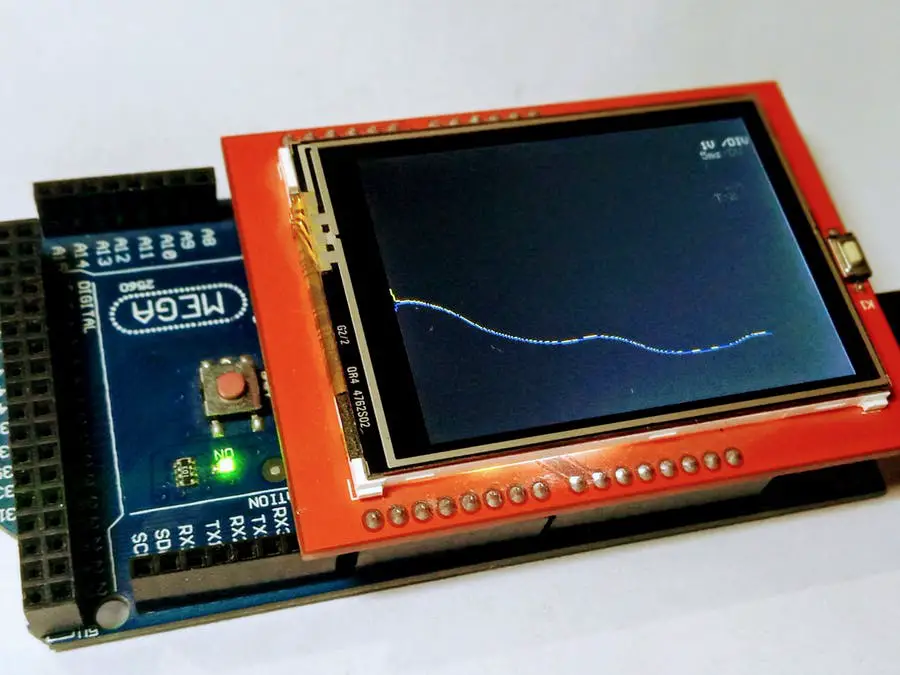
11. Robotic Arm Model
This project can be considered a robotics project, embedded systems project, or even control systems. It combines multiple disciplines all together in one thing. And you can decide and choose how complex it’s going to be. First of all, you’ll determine how many degrees of freedom (DOF) it’s going to be. Then, you may order the frame from Amazon.com or just 3D print it locally.
Afterward, you can connect your microcontroller to the servo motors and start controlling it. Manual control should be a very easy task to do. Get a couple of joysticks to take the input from the user and move the motors correspondingly.
Then you might add some autonomous trajectory planning and generation, this will require a camera and some image processing and a connection to a local computer that gives the robot a map for the surrounding space. Then it should, on its own, plan away from point to point then solve the equations to find the corresponding set of angle positions one by one until it reaches the goal position. This should be a hard task that requires a lot of research and lectures to get a grasp on.
You may use the robot for pick and place kind of tasks or you can feed it manual motion and program it to keep repeating this motion or even add an Ai algorithm to make it intelligent enough to plan ahead and generate smooth & shortest feasible trajectory to get to the target goal position. Add any other options you may think of.
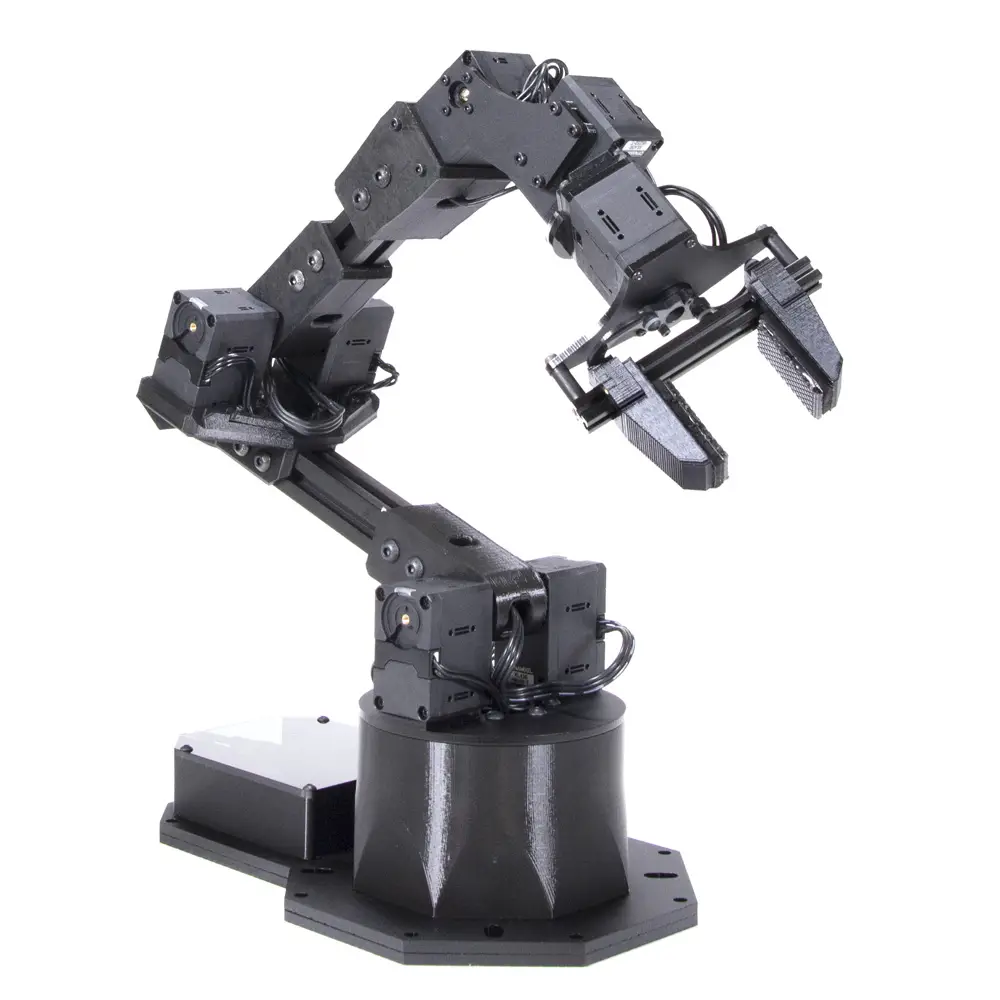
12. Autonomous Car Parking
You can easily get a model frame for a small robotic car. Now, try to quip it with proximity sensors and ultrasonic range finders and implement an intelligent algorithm to perform autonomous parking. The intelligent parking assistant algorithm should consider the available space and determine whether it’s suitable for the car or not. Then plan the trajectory it should follow in order to park safely and smoothly.
This project needs to study planning algorithms and getting the right sensors that pass to the algorithm the necessary data to plan the way it’s going to park. a powerful microcontroller is needed for that and minimal electronic circuitry. Most of the work will be on developing the autonomous parking algorithm itself.
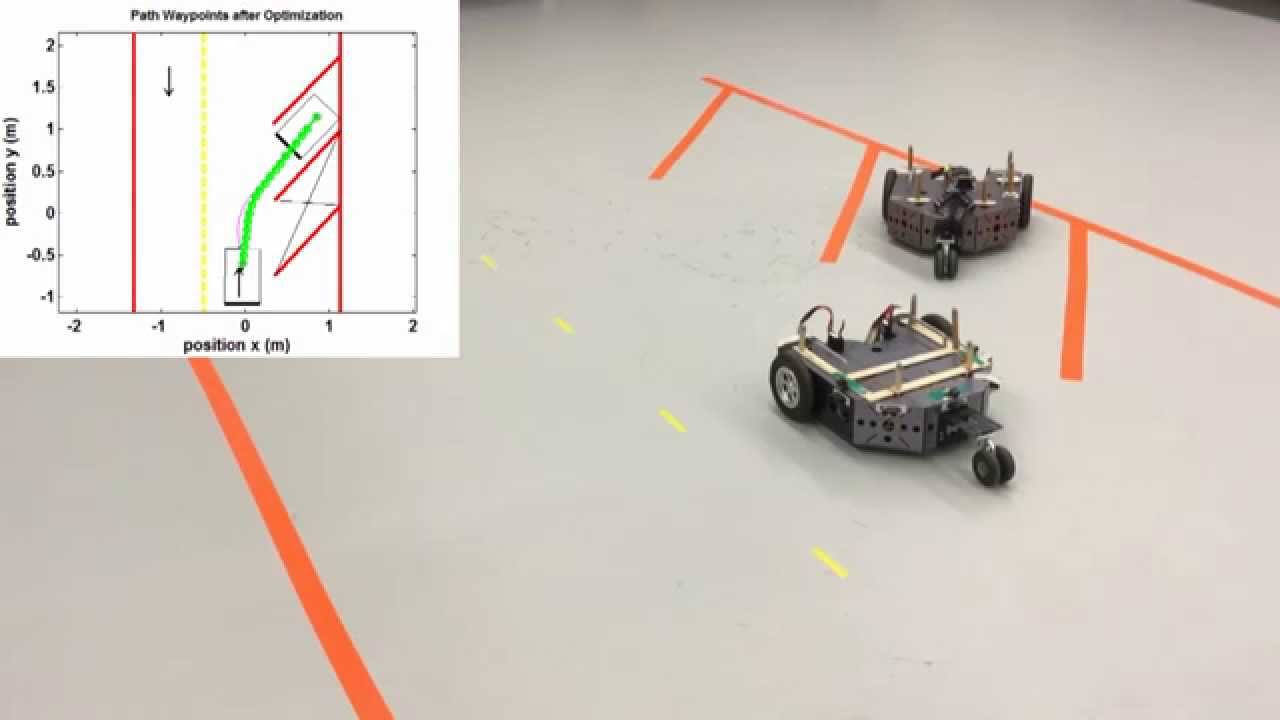
13. HoverBoard
This is one of the most interesting embedded systems projects at all. It requires the design and implementation of a control system to model the inverted-pendulum (The hoverboard, also known as segway). You’ll be working on the firmware to read the IMU sensor data and then implement the control system algorithm whether it’s PID, LQR, or whatever.
Be careful with the data from the sensor, as you may need to implement a digital filter. And it’s the case most of the time! You’ll also need to do some isolation for your microcontroller circuitry from the heavy-duty DC motors. The strong magnetic field may affect the sensor’s readings or the operation of the microcontroller itself. And be sure to use some tools like MATLAB to plot and characterize the system’s response parameters. Such as rising time, settling time, peak overshoot, etc.
You can add a couple of buttons or small pedals just to make it turn around (while maintaining stability). This feature may be helpful for the end-user, and try to add any further functionality you wish. And be patient while tuning it!
Note: a lot of online tutorials for hoverboards are on/off switches and it’s not what you might be willing to do in fact! The system we’re talking about incorporates IMU sensor and control systems engineering and a lot of technical details that you’ve got to research before starting. I just wanted to give you attention about most of the online tutorials regarding hoverboards are not what we’re talking about at all.

14. Gesture RC Car
This is a very common project in the maker space. So I don’t think it’s eligible to be a final project, however, it’s very good for practicing embedded systems and interfacing. If you’re still learning and doing projects just for fun and to learn, then you should consider this one for sure!
The basic idea of it is to create a wearable hand glove equipped with an IMU sensor to detect the hand’s gesture and orientational position, so you can send this data to the robotic car which will be moving correspondingly.
Here is why it’s helpful. First of all, you read the data from the IMU sensor and process it on the microcontroller mounted on the hand glove. Then prepare the data packet to be sent to the car to know how it should move. You’ll learn sensors interfacing and establishing a wireless communication channel between two microcontrollers and how to drive motors, etc.
In fact, there is no algorithm to implement, no calculations or mathematics at all. And that’s why I don’t recommend this as one of the large embedded systems projects, because it’s not. The amount of work it’s going to take is pretty low and it should take you 1 or 2 nights to complete.
Check out this IMU interfacing tutorial (includes a hand-controlled 1-D joystick project)
15. Hand-Held Game Console
You can build a small gaming console using a microcontroller and graphical LCD display. Something like Tetris and snake shouldn’t be that hard and you’ll learn a lot of stuff down the road while creating this project.

You’ll learn how to represent objects in space, check for collisions of the end of the screen, etc. You’ll make it battery-powered and construct a battery charging management module for it. This project requires a minimal amount of hardware work. On the other hand, developing the software for it will be a bit challenging especially if you’ve not programmed for games before. You’ll learn a lot of new concepts.
16. Smart Home Model
The trend of smart home embedded systems projects has come to an end a while ago. However, it’s still a viable option to go for. But try to find innovative ideas to make the home really smart and practically efficient. Nobody wants a sensor to detect his presence so it unnecessarily turns up light, fan, etc. It’s not smart at all, to be honest.
You may think of intelligent ways to detect or predict fires at home. Or theft protection, using a camera, face recognition algorithms, etc. Try to think of real problems in “normal” homes that could be solved in a smart home and implement the system that does so.
It’s not about the microcontroller or the hardware you use. It’s more about how practically effective smart home solutions are. Are they really worth it? Think about it
And don’t get me wrong on this. I’m not discouraging you not to make smart homes. It’s totally fine, it’s OK. But think about your solution from a practical perspective and judge if it really solves a real problem or not.
17. Maze Runner
Here is another project that requires implementing an Ai algorithm in order to solve the maze and get out. The robot frame is easy to construct or build, followed by sensors placement. Then it’s the time for programming it! Here is what you’ll be needing to achieve the task.
First of all, the robot must move straight forward directly without drifting and perform 90 degrees & U-turns. This could be achieved by sensors or by brute fore trial and error for the amount of delay required (not recommended). Secondly, you’ll need to sweep the maze and register a map for it. For this, a simple rule could be followed such as the right-hand or the left-hand rule. After getting the map for the maze, now pass it to the intelligent path planning algorithm to give you the shortest path from the start to the end. The robot must go as fast as possible to solve it in the second trial.
For path planning, you can typically use A* or Dijkstra algorithms or anything else you find easy to implement. And practice a lot to test everything in your system and enhance the performance as much as you can. And try competing with others, it’s a game at the end of the day, not a practical product!
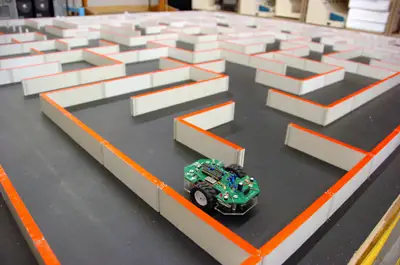
18. Power Consumption Tracker
This is one of the most interesting embedded systems projects that I’ve come across many years ago. You can actually design and build an electronic circuit that fits in the wall adapter to monitor the power consumption of each device in the home.
Your system’s circuitry will have to detect the amount of current being drawn from the AC mains and the voltage (typically 220v) and it’ll be able to find out the power consumption of the attached device.
You can go really creative with this project in fact. Provided the price of electricity in your country per w/h, your system can send alerts or notification to the user that his/her house did consume electric power and the due total bill say 25$ or so. This can be done in real-time.
Wanna go more creative? well, record the user data and make predictions if he/she kept following the same pattern of consumption will have to pay x$, so they can reduce or optimize consumption to meet the target bill requirement. I believe there still be some options to add, it’s now your turn!
A variety of microcontrollers can fit into this project and again it’s about the microcontroller or hardware. It’s more about the value the end-user gets at the end of the day. Try to think about very helpful features and options that you can add to the system to make it more helpful. For both individuals and industrial applications if you’re targeting these as well.
19. Vending Machine
Another great project is to create a vending machine that accepts coins and serve products to the users. You can equip your machine with a touch screen for product selection. A coin counter and inspection system must also be carefully implemented and tested. This project will also need some mechanical design mechanisms in order to perform all the required functions.
You can add to this project multiple different options to make it more interactive with the end-users. Maybe some sort of voice messages or whatsoever.
Maybe you should start your research right there.
20. PCB Carving CNC Machine
This project is considered one of the best embedded systems projects that you could possibly do. It’s educative, full of technical details which is very nice when presenting it for judging. And it’s a really useful and helpful machine to have. It’ll help you make your own PCBs (printed circuit boards) in the home without going through the nightmare of printing, etching or whatsoever. This machine will crave on the copper plate of the PCB board itself!
Instead of building a CNC that draws on paper, this will crave on board! And the final results are pretty amazing! you’ll use it a lot for your electronic small projects and basic PCBs instead of printing or so. You can build it from scratch or just order the ready mechanical frame from the link below on Amazon.com, then you’ll start programming it right away.

You can program it to include an interface for SD cards, so it accepts the G-code data from an SD-Card. which pretty much more efficient than depending on a wired connection to a PC, that could possibly go wrong for any reason. It’s your machine, you can add whatever features and options you see convenient for it. Do some research on this topic, get the frame, and start your project right away! Here is a picture of the expected results of such a project.
END Of The Top 20+ Embedded Systems Projects Ideas List. Share It If You Like It!
This Will Signal Me That I Should Consider Sharing More Ideas
Did you find this list helpful? Then please, SHARE it on social media and let me know in the comments what do you think and if you need more project ideas like this one! I’ll consider posting another, maybe longer, embedded systems projects ideas list if this article got some traction and shares.
Good luck with your project!
